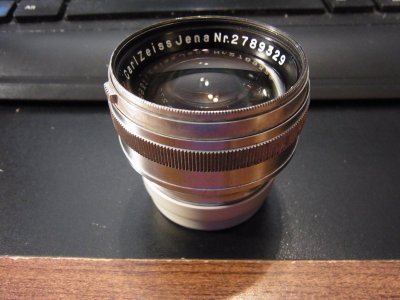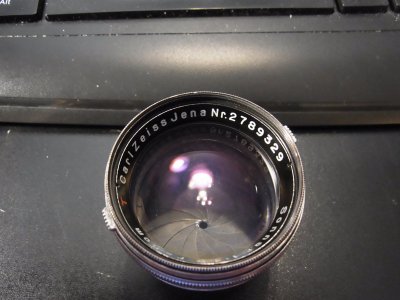@TenEleven is right. The column Rechnung contains the official date of the optical calculation used for all lenses of a batch. Yes, Rechnung could mean invoice and bill but it also means calculation. In the Nummernbuch II it stands for the calculation date. All the Sonnar calculations were done by Ludwig Bertele. And there are only 5 for the Sonnar 5cm f1,5 in this book that went into production.
There are few cases where the Rechnung date seem off in the Nummernbuch. One of those cases is the batch
@Sonnar Brian mentioned. I tried to investigate this batch because it has an interesting constellation.

The screenshot shows a list of production batches of the Sonnar 5cm f1,5. The orange / grey column contains the date of the optical calculation. The column Production contains the start of the production of a batch. You can easily see that Bertele created a new calculation on the 15th April 1935. Batch 24 started before this date. Batch 25 and 26 started after this date but with the older optical calculation from 1932. This information is from the Nummernbuch and so from the Zeiss production cards.
The nagging question was how trustworthy is the information from the Zeiss production card? Usually when there was a new calculation the production batch starting afterwards used this calculation. Not in this case. As Brian already stated his Sonnar from batch 25 uses the v3 optical calculation (date 15.04.35). I have another Sonnar from batch 25 and 26. When I compare it with my Sonnars from earlier batches I would attest that those are the newer optical calculation and not the 1932 one.
You guys might think that can't be true but Germans are not perfect. Zeiss is not perfect. Their production system was flawed. The production cards did not tell all the truth we wish to see as collectors and hobby historians.
Those production cards were filled out at the start. When some customer (for example Zeiss Ikon) ordered a number of lenses they took a blank production card and filled in the type of lens, the camera mount it was destined for, the serial block of those lenses. Then this card was filled with the date of the calculation and the date of the blueprint of the body. Every department needed to sign the card when they received it and filled in some additional information. The optics bureau added changes to the diameters or distances of the lenses. It could take some days until the work on a batch was started. Grinding the glass took month. Creating the body and put everything together was quicker.
Since this all was such a slow process. I doubted that the information about the used 1932 calculation was right. I could not imagine that they would grind 2 batches of old optics while there is a newer better calculation. And it seems they changed it pretty fast without changing the date on the production card. I can not rule out that there are some batch 25 Sonnars with the 1932 calculation. Can we say for sure that the very first lenses in this batch have the 1935 calculation? No.
This leaves us in a difficult situation. How reliable is the information from those production cards? Pretty reliable when it comes to serials. When the calculation changed there might be some issues. Body changes are another story. Zeiss is notorious for changing details during production runs... Contax fans know what I mean.










